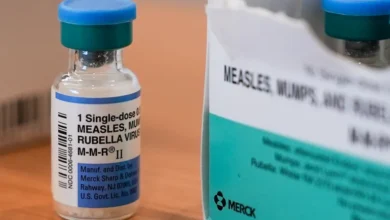Depressed fish? How Prozac in lakes and rivers may harm aquatic life

Traces of the anti-depressant, fluoxetine – often better known by its commercial name, Prozac – have been detected by an Australian-Italian joint study of lakes and rivers, and may be affecting freshwater fish.
A five-year study by scientists from Monash University’s School of Biological Sciences and the University of Tuscia’s Department of Ecological and Biological Sciences examined the effect of pharmaceutical residues on fish in freshwater in Australia.
Fluoxetine, the third-most popular anti-depressant pharmaceutical and which was the first commercially successful selective serotonin reuptake inhibitor (SSRI – a form of antidepressant) is one of the main drugs to have been found.
Why have anti-depressants been found in lakes and rivers?
When patients take any type of prescription medicine, their bodies do not absorb all of the medication. The residue is excreted in urine or faeces, which is then flushed through toilets and passes into waterways and waste treatment centres.
The residue remains in the water and aquatic life in our waterways can absorb these left-over pollutants.
According to some estimates, the “bioavailability” of fluoxetine is roughly 70 percent to 72 percent. Bioavailability is the portion of a drug or other substance that enters the bloodstream. The remaining 28 percent to 30 percent is excreted as waste.
Even at waste treatment centres, where wastewater is treated to remove contaminants, many of our modern-day water treatment plants were not designed to filter out chemicals related to pharmaceuticals.
Once the treated water is pushed back into waterways, the pharmaceutical-tainted water can still be absorbed by fish.
Furthermore, unused or expired medication is frequently – and improperly – disposed of through toilets, adding to the problem.
What did the study find?
In 2016, researchers took 3,600 male guppies (Poecilia reticulata) from Alligator Creek in North Queensland to study whether any fish had been contaminated with fluoxetine. They found no contamination.The fish were assigned randomly to one of three exposure levels: no fluoxetine (control), “low” or “high”. The “low” treatment level corresponds to the typical concentration of fluoxetine found in normal surface water. The “high” level represents the concentration commonly found in bodies of water heavily affected by human waste.
The findings showed that male guppies exposed to even low levels of fluoxetine experienced an increase in the size of the gonopodium, a modified anal fin used to inseminate female guppies. A longer gonopodium can increase the odds of mating success.
However, the male guppies also exhibited lower sperm mobility – resulting in sperm that were less capable “swimmers” and causing lower fertility among the fish.
The study also found that male guppies were forced to divert energy to maintain a larger gonopodium at the expense of their overall health. How this may be damaging to the health of the fish is still under investigation, Giovanni Polverino, one of the authors of the study from the University of Tuscia, told Al Jazeera.
“The trade-off is in deciding how to distribute your energy across competing functions [of the body]. What we have seen is that the effect of the pollutant changes these trade-offs because there is a change in the anal fin [gonopodium]. As a consequence, there has to be a change in something else. What is less obvious is the way in which this trade-off changes.”
What other contaminants can be found in freshwater?
A whole host of pharmaceutical products besides fluoxetine have been found in freshwater, according to a joint 2021 study, titled, Removal of Pharmaceuticals from Wastewater: Analysis of the Past and Present Global Research Activities, from the University of Granada and University of Almeria in Spain and University of Francisco de Paula Santander in Columbia.
The study found that, “Among pharmaceuticals, it is important to highlight analgesics, lipid regulators, antibiotics, diuretics, non-steroidal anti-inflammatory drugs, stimulants, antiseptics, beta-blockers, antimicrobials, as well as their metabolites and transformation products. These contaminants are introduced in the environment during their production through wastewater coming from urban areas and hospitals.”










